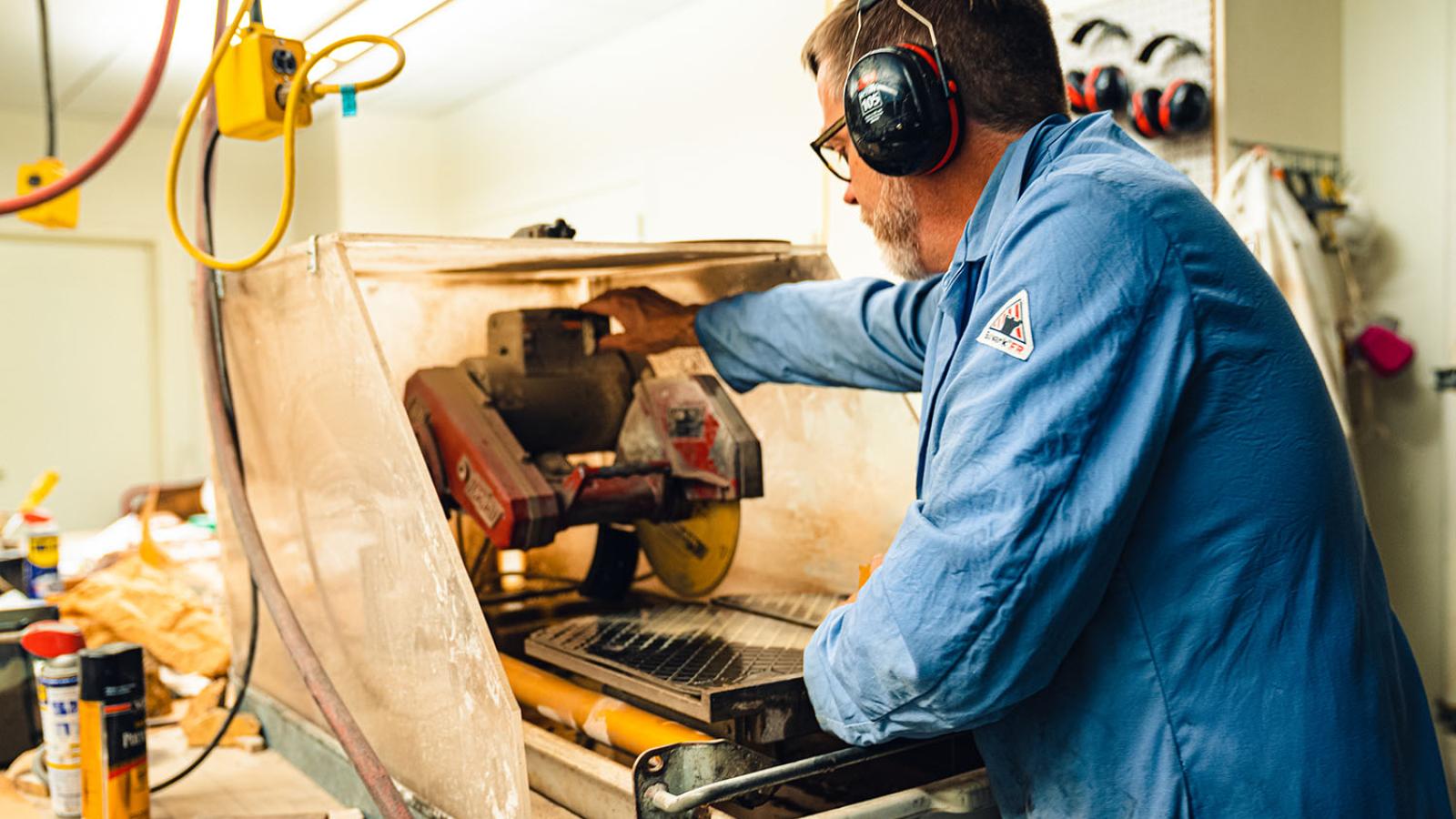About 600 million years ago, geologists believe, life on earth suddenly changed. Where there had been only single-celled organisms, the ocean—where life first existed—literally teemed with more complex animals. “This did not happen slowly and gradually, as Darwin would have predicted but instead seems to have happened in a very short period of time,” says Robert Gaines, Edwin F. and Martha Hahn Professor of Geology and dean of the college. From a geologist’s point of view, “that would be a handful of millions of years.”
For two decades, Gaines has researched this period in Earth’s history, known as the Cambrian “explosion.” During this era, says Gaines, all of the phyla of the animal kingdom appear in the fossil record at the same time.
This summer, though, Gaines will turn his attention to the time immediately preceding it, known to geologists as the Ediacaran Period. It came just after Snowball Earth, when the entire planet is thought to have experienced its most intense ice age and nearly froze over. There was also a large increase in oxygen in Earth’s atmosphere.
The fossil record in the Ediacaran Period shows “mysterious organisms there that are not clearly animals,” says Gaines. “We have the flourishing of organisms that are as big as a meter, but they don’t appear to have any eyes or mouths or organs. It seems that these organisms must have been passively absorbing nutrients from the environment around them.”
Gaines will join a research team working in Australia’s Outback, which geologists say was an ocean a half-billion years ago. The three-year project aims to “look at the oldest animals on the planet and understand the environment in which they lived,” says Mary Droser, Distinguished Professor of Geology at the University of California, Riverside (UCR), a team member who has been working in the Ediacaran Hills in South Australia for 20 years. It is funded by the Australian Research Council and includes geologists from the University of Adelaide, the South Australian Museum, UCR and Pomona College.
“There are a lot of mysteries about this era—about where we all come from and what was happening on Earth that promoted the evolution of complex life,” says Gaines. “These organisms are found preserved on the seafloor, where they lived in ancient sands. It’s not exactly clear what they were.”
Having served as Gaines’ dissertation adviser during his doctoral program at UCR, Droser knows his passion for the discipline and the skills he brings to the team. The research requires coring through rock to extract samples that have not been impacted by surface water. “Bob brings a great deal of drilling expertise,” says Droser, and also “expertise in geochemistry, looking at the chemistry of the rocks to tell us about the environments that the organisms lived in.”
Gaines says that the team hopes to collect samples from which “we can extract chemical signals that will tell us about the state of the oceans and atmospheres at this time.” They aim to unravel the mystery of how animals that were entirely composed of soft tissue—think of jellyfish—came to be fossilized in a unique way as molds in sandstone. Droser notes that Gaines is a leading expert on environments that preserve soft body animals in the fossil record.
“The most important thing to me is that these fossils are preserved through a very mysterious process that’s unlike any processes that happen in nature today,” says Gaines. If a scientist put a jellyfish in a container filled with seawater, in about three weeks the jellyfish would entirely disappear, he explains. Not so in this geological era in this environment, which, he says, could be home to some of the oldest animal communities on Earth.
Droser describes Gaines as a consummate field geologist—patient, data driven, seeing the big picture. “He loves the discovery. He loves understanding what these animals were and where they were living,” she says. “He’s a kid in a candy shop.”
For that, Gaines thanks his mother, who gave him a trilobite fossil when he was five years old. “That got me off of dinosaurs right away,” he says. “It opened my eyes to the really deep history of complex life.” His doctoral research was centered in the area in Utah where that fossil was found.
Gaines expects to spend about three weeks each year in the field in Australia and the rest of the time in the lab at Pomona College, where he hopes to include students in data analysis.
“I’m living my five-year -old dream,” Gaines remarks. “When you’re five, you think about going into the field and splitting into rocks and discovering something. But thinking about how that stacks up into a much bigger framework, and a way of viewing the world in terms of how life and the Earth have evolved together over billions of years, is really extremely satisfying.”
